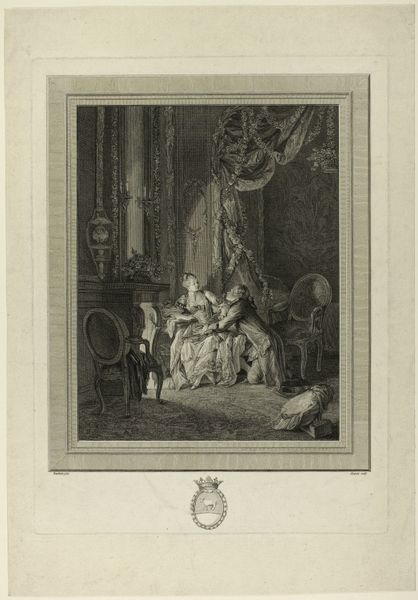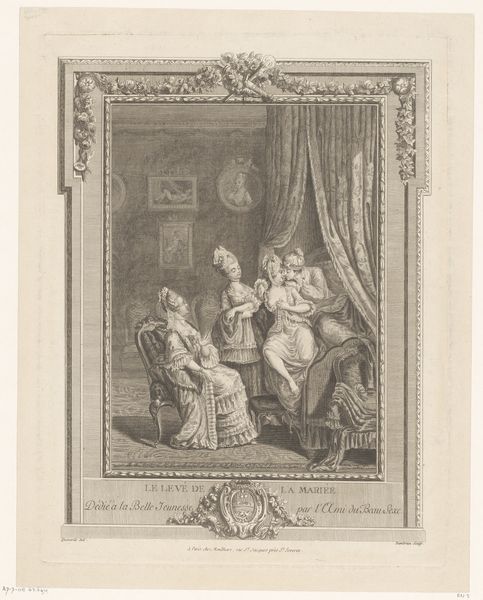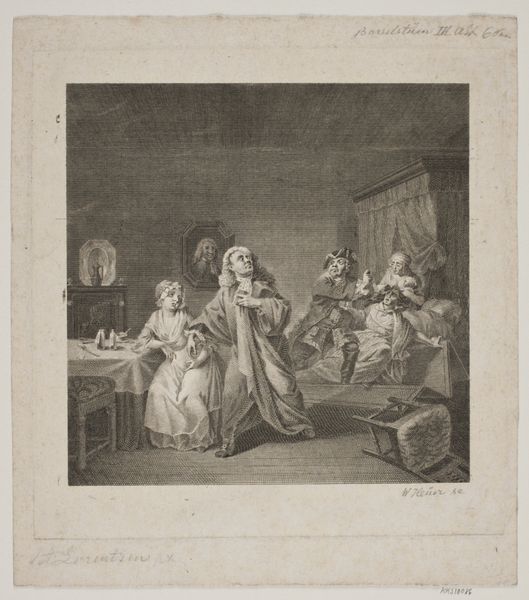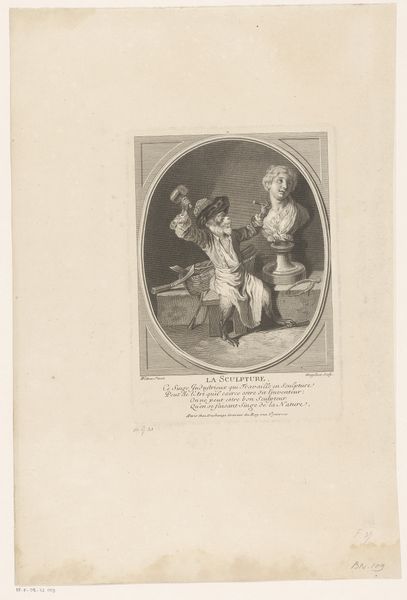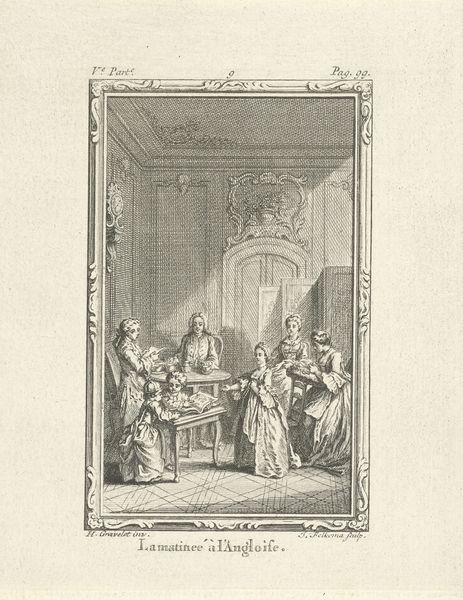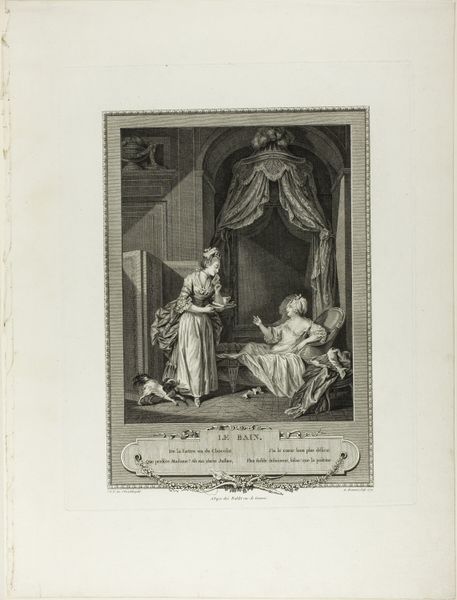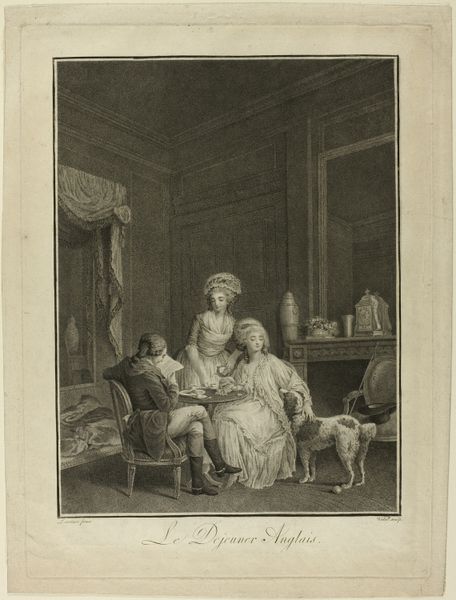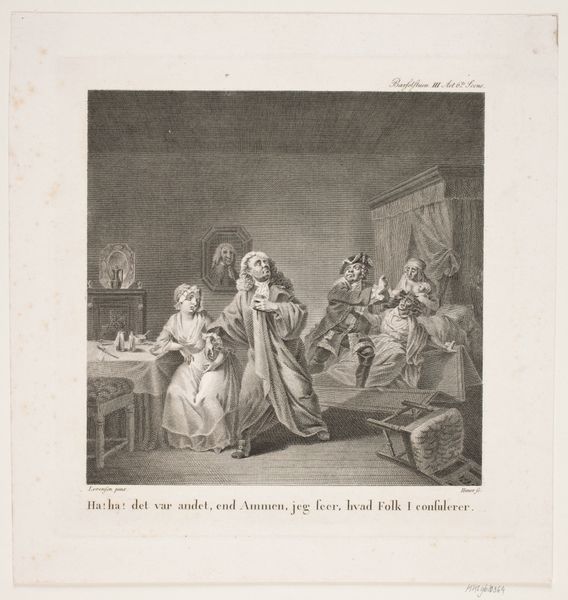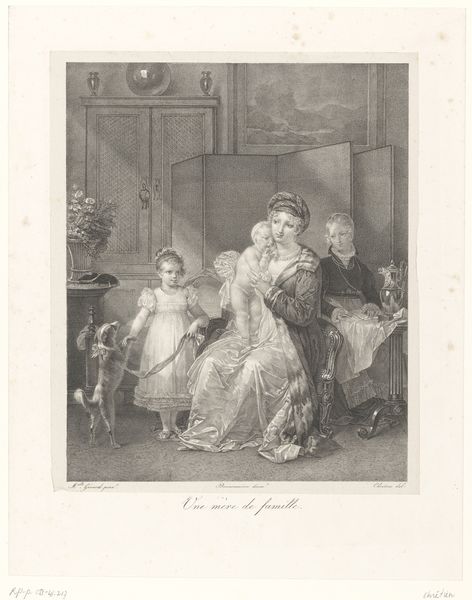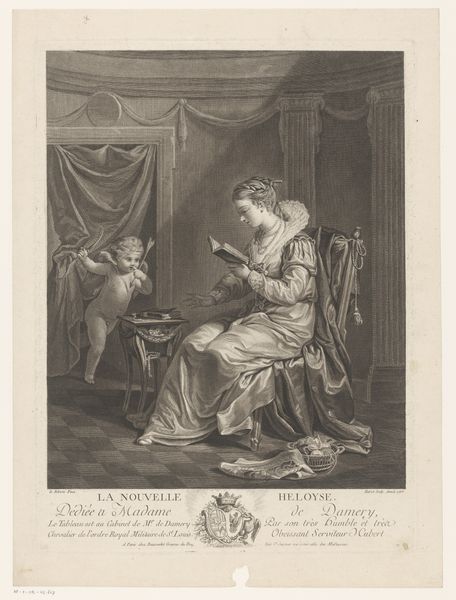
drawing, print, etching, paper
#
portrait
#
drawing
#
allegory
#
narrative-art
# print
#
etching
#
figuration
#
paper
#
vanitas
#
france
#
line
#
genre-painting
#
history-painting
#
academic-art
#
miniature
#
rococo
Dimensions: 275 × 214 mm (image); 420 × 317 mm (plate); 510 × 395 mm (sheet)
Copyright: Public Domain
Editor: Here we have Etienne Fessard's "Symbolic Cage," made in 1760. It's an etching, quite detailed and finely wrought, depicting a domestic scene, but with a rather unsettling skull motif below. What's your take on this piece? Curator: I see a commentary on the socio-economic realities of 18th-century France. Consider the labor involved in producing this etching—the skilled artisan meticulously translating an image onto a copper plate. And for whom? A burgeoning middle class with disposable income, eager for representations of leisure and status. Editor: So, the skull isn't just a morbid reminder of death, but…a comment on consumerism? Curator: Precisely! Think of "vanitas" paintings – luxury goods juxtaposed with symbols of mortality. Fessard uses the etching medium itself to critique the fleeting nature of earthly pleasures and the labor that sustains them. How accessible would the original painting have been, compared to this print intended for mass production? Editor: That's a great point. The etching democratizes the image, but also commodifies it. Was the creation of "fête galante" imagery itself also a commodified process at this time? Curator: Absolutely. These images perpetuated a specific vision of aristocratic life, which, in turn, fueled demand for luxury goods and services. This is not just about aesthetics, but the very means of production and consumption intertwined. What do you make of the arrangement in the depicted scene - do you notice differences between how men and women appear to be spending their time, for example? Editor: Yes, the man looks like he's showing the woman a bird. This image, it seems, has multiple levels of constructedness, the layers that make its physical presence possible and then how these class and gender dynamics work on the page! Curator: Exactly. And thinking about art this way—focused on material conditions— allows us to see how deeply enmeshed art is within broader social and economic systems. Editor: I never would have thought about it that way. Thanks for the insight!
Comments
No comments
Be the first to comment and join the conversation on the ultimate creative platform.
